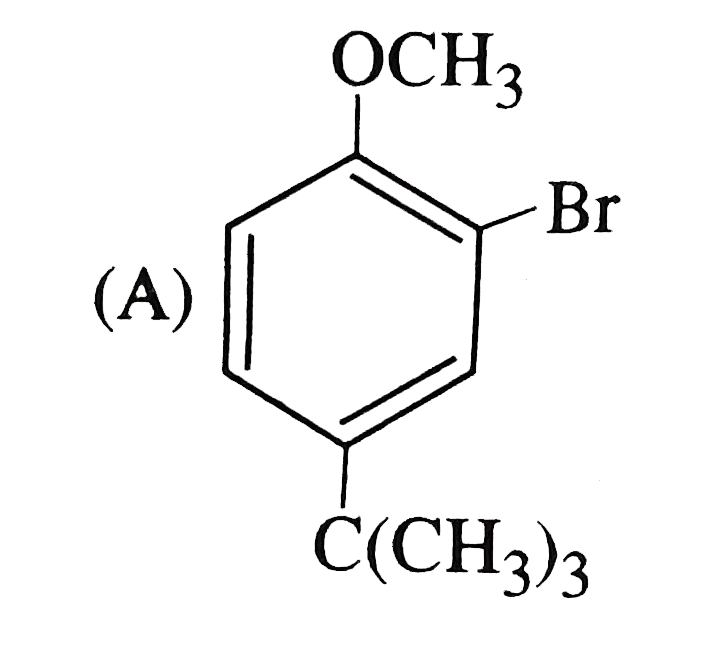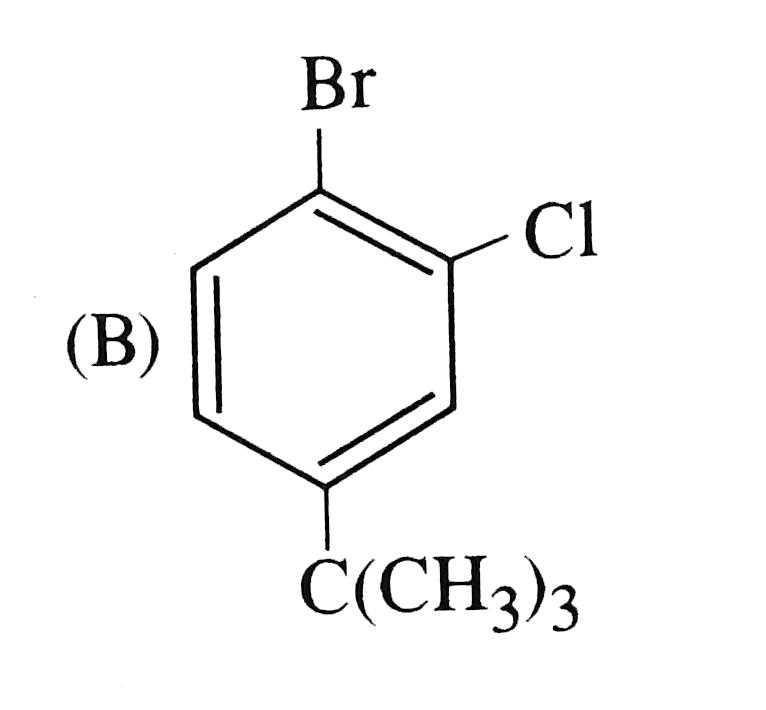cis-2-buteneHBr−−−−−−−→Peroxideproduct, Product of the reaction is:
Racemic
Diastereomers
Meso
Pure enantiomers
The correct Answer is:a
To determine the product of the reaction of cis-2-butene with HBr in the presence of peroxide, we will follow these steps:
1. Identify the Reactants:
- The reactant is cis-2-butene, which has the structure:
CH3−CH=CH−CH3
- In the cis configuration, the two methyl (CH₃) groups are on the same side of the double bond.
2. Understand the Reaction Conditions:
- The reaction occurs in the presence of peroxide, which indicates that a free radical mechanism will be involved.
3. Free Radical Mechanism:
- In the presence of peroxide, HBr will dissociate into H• (hydrogen radical) and Br• (bromine radical).
- The double bond in cis-2-butene will undergo homolysis, forming two radicals: a carbon radical and a hydrogen radical.
4. Formation of Radicals:
- The double bond can break in such a way that either carbon can become a radical. This leads to the formation of two possible radicals:
- CH₃-CH•-CH₂-CH₃ (with a radical on the second carbon)
- CH₃-CH₂-CH•-CH₃ (with a radical on the third carbon)
5. Radical Combination:
- The H• radical can add to one of the carbon radicals formed, while the Br• radical can add to the other carbon.
- Due to the symmetry of cis-2-butene, both combinations will yield the same product:
- CH₃-CH(Br)-CH₂-CH₃
6. Chirality and Optical Activity:
- The product has one chiral center at the carbon that is bonded to the bromine atom. This means that the product will be optically active.
- The presence of a chiral center allows for the formation of two enantiomers (mirror images).
7. Final Product:
- The final product of the reaction is 2-bromobutane, which exists as a racemic mixture of two enantiomers due to the presence of the chiral center.
Conclusion:
The product of the reaction of cis-2-butene with HBr in the presence of peroxide is a racemic mixture of 2-bromobutane, which is optically active due to the presence of a chiral carbon.
- The reactant is cis-2-butene, which has the structure:
CH3−CH=CH−CH3
- In the cis configuration, the two methyl (CH₃) groups are on the same side of the double bond.
- The reaction occurs in the presence of peroxide, which indicates that a free radical mechanism will be involved.
- In the presence of peroxide, HBr will dissociate into H• (hydrogen radical) and Br• (bromine radical).
- The double bond in cis-2-butene will undergo homolysis, forming two radicals: a carbon radical and a hydrogen radical.
- The double bond can break in such a way that either carbon can become a radical. This leads to the formation of two possible radicals:
- CH₃-CH•-CH₂-CH₃ (with a radical on the second carbon)
- CH₃-CH₂-CH•-CH₃ (with a radical on the third carbon)
- The H• radical can add to one of the carbon radicals formed, while the Br• radical can add to the other carbon.
- Due to the symmetry of cis-2-butene, both combinations will yield the same product:
- CH₃-CH(Br)-CH₂-CH₃
- The product has one chiral center at the carbon that is bonded to the bromine atom. This means that the product will be optically active.
- The presence of a chiral center allows for the formation of two enantiomers (mirror images).
- The final product of the reaction is 2-bromobutane, which exists as a racemic mixture of two enantiomers due to the presence of the chiral center.
The product of the reaction of cis-2-butene with HBr in the presence of peroxide is a racemic mixture of 2-bromobutane, which is optically active due to the presence of a chiral carbon.
Topper's Solved these Questions
- HYDROCARBONS (ALKENES)Book:MS CHOUHANChapter:HYDROCARBONS (ALKENES)Exercise:Level 1 (Q.1 To Q.30)
Explore 1 Video
- HYDROCARBONS (ALKENES)Book:MS CHOUHANChapter:HYDROCARBONS (ALKENES)Exercise:Level 1 (Q.61 To Q.90)
Explore 2 Videos
- HYDROCARBONS (ALKANES)Book:MS CHOUHANChapter:HYDROCARBONS (ALKANES)Exercise:Level 1 (Q.31 To Q.50)
Explore 1 Video
- HYDROCARBONS (ALKYNES)Book:MS CHOUHANChapter:HYDROCARBONS (ALKYNES)Exercise:Level 1 (Q.1 To Q.30)
Explore 2 Videos
Similar Questions
Knowledge Check

(i)KCN−−−−−−−→(ii)H+ Product , Product obtained in the reaction is :ADiastereomerBRacemicCMesoDOptically pure enantiomerCH3−CH2−CH2−CH3AlCl3−−→HBr product. Product in above reaction is
ACH3−C∣BrH−CH2−CH3BCH3−C∣CH3H−CH3CC∣BrH2−CH2−C∣CH3H2DAll of theseAnisole (CH3)3CCI−−−−−−−→CI2/FeCI3−−−−−−→HBr−−→HeatX
The product X in the above series of reaction isA B
B C
C D
D
Acetylene Cu2+→O2 The product formed in the reaction is
View Solution_E01_296_Q01.png)
Br2−−→Fe ? Major product in this reaction is :
View SolutionCl−CH2−CH3∣C∣CH3−CH2−CH2−Cl+l_−−→DMF product , major product of this reaction is :
View SolutionIsobutylene +HBr−−−−→peroxides product is :
View SolutionCH3−C∣CH3=CH2HBr−−−−→PeroxideCH3−CH∣CH3−CH2Br reaction intermediate of this reaction is:
View Solution

